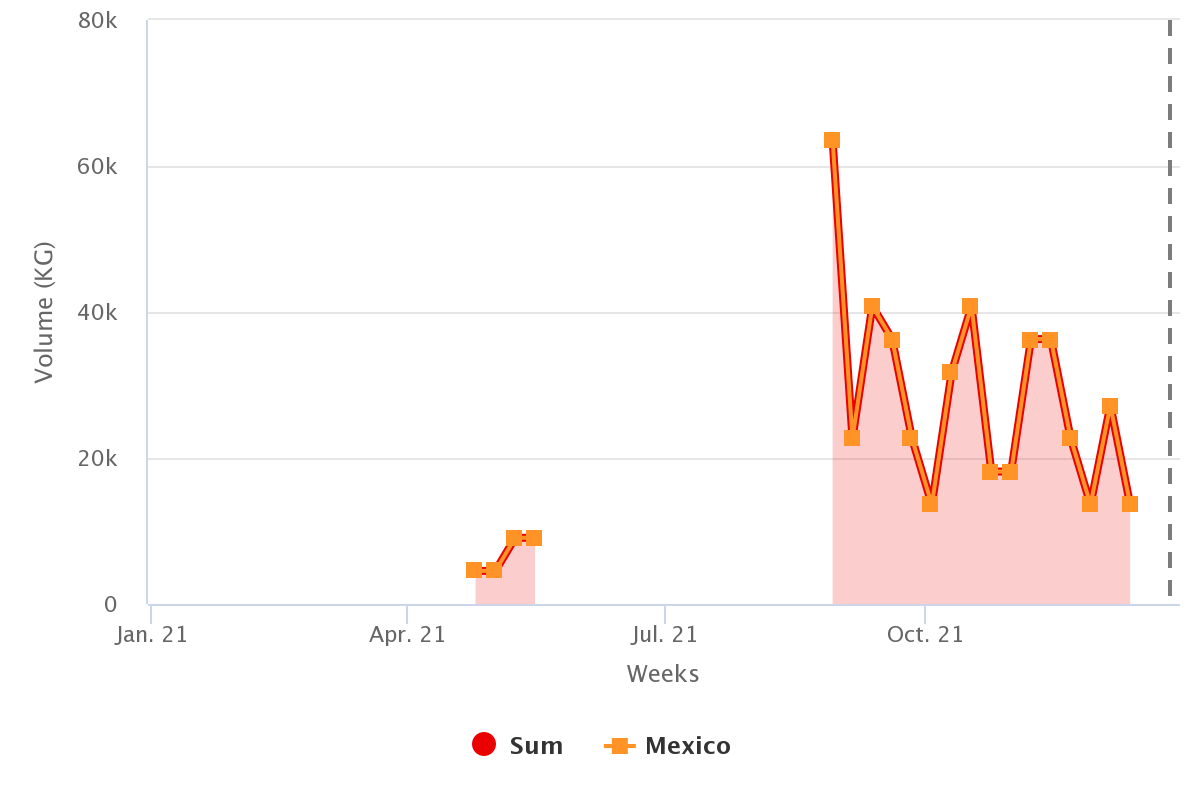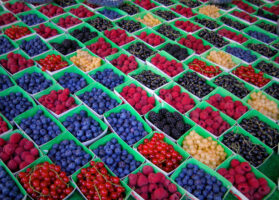Lighter volumes meet strong demand on organic asparagus
Overview of organic asparagus in the U.S. market, complemented by charts from Agronometrics. Original published on December 23, 2021.
Organic asparagus is currently in a lighter production cycle, as expected.
“We’re pretty much where we expected to be. We have Baja finishing and Caboroca sputtering to life out of Mexico,” says Ethan Abendroth, asparagus buyer for San Francisco, CA-based Earl’s Organic Produce. “We’ll start to see more production here after the first of the year. Generally Earl’s anticipates having decent supplies available as soon as the middle of January.”

Source: USDA Market News via Agronometrics.
(Agronometrics users can view this chart with live updates here)
Meanwhile demand is strong for organic asparagus. “We need more asparagus than we can get. It’s the same story as the end of last year and beginning of this year,” says Abendroth, noting that generally more and more people are making produce-centric dietary choices.
Strong pricing too
All of this leaves pricing strong on organic asparagus in the range of $30-low $40s.
“As the production cycles ramp up pretty significantly, that price will come down. In previous years it’s been a runaway free fall but we don’t have any production estimates coming out of Mexico for this year,” he says.
That said, Abendroth notes that as Earl’s moves to sourcing out of the domestic season in California, there are fewer and fewer growers in the state every year because of the production costs.
Supplies for Earl’s out of California’s Salinas Valley will begin in February. “If we get a dry winter, it will be February 1st. And if we’re still getting through winter, Earl’s will see supplies the last week of February into the second week of March. That three-week window would be our general start time for California,” Abendroth says.
The News in Charts is a collection of stories from the industry complemented by charts from Agronometrics to help better tell their story.
Access the original article with this (Link)






